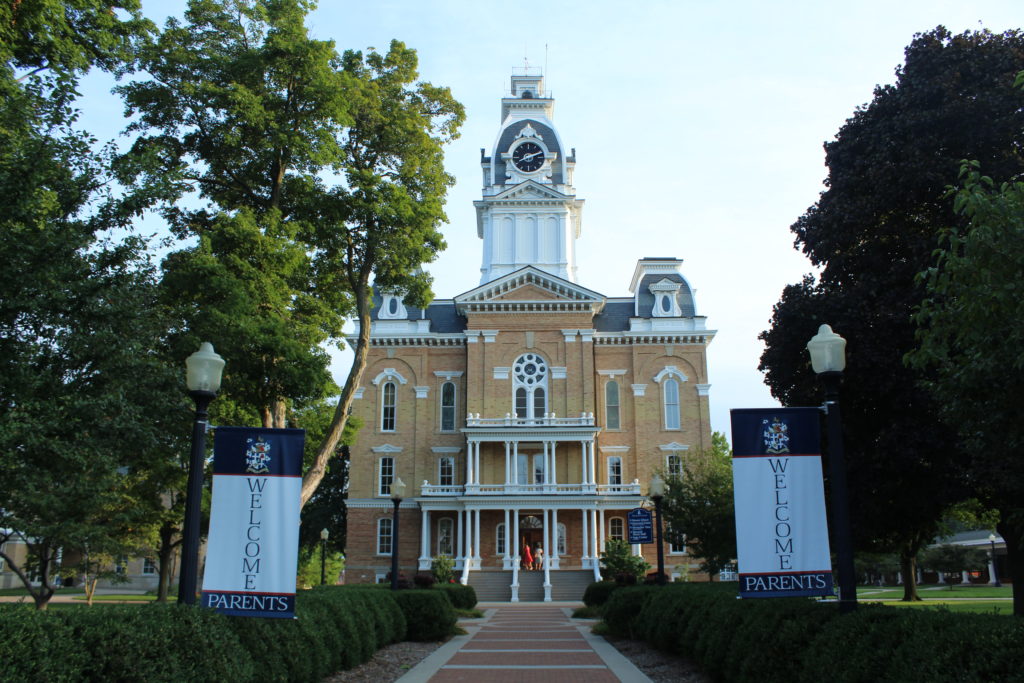
The Wall Street Journal has once again excluded Hillsdale College from its annual ranking of the best colleges in the nation. Since the Wall Street Journal/Times Higher Education began the annual College Ranking list in 2016, it has not once included Hillsdale College because the data for its rankings comes from the Department of Education.
“This has been a problem for a few years now,” Hillsdale College President Larry Arnn said in an email. “The rankings capitalize on and are diminished by the tendency to think that the success of colleges is principally in the future earnings of their students. It is partly there, but other things are more important and higher.”
The Journal’s ranking methodology depends heavily upon data collected by the federal government on universities’ racial diversity and graduate salaries. As Hillsdale College does not accept federal funds, it is not required to submit such information on its students to the Department of Education. In fact, the school does not even collect racial information due to its commitment to educate “irrespective of nation, color, or sex,” as its mission statement states.
The racial diversity of a university’s community and the average graduate’s earnings are two of four categories that the Wall Street Journal uses to determine its rankings. The other two categories assess what spending schools put toward instruction and student services, and the quality of teaching and student/professor interaction based on student surveys.
Because of the coronavirus pandemic, the Wall Street Journal canceled student surveys this year, saying “it was unreasonable to expect institutions to invest time and effort surveying their students during a crisis” and that the shift to online teaching would make the survey results unreliable. Consequently, the paper reused student survey results from last year.
To determine racial diversity, the Journal looks at Pell Grant enrollment data collected by the National Center for Education Statistics. For graduate salary data, the Journal looks at publications from the Department of Education’s College Scorecard. Neither of these government sources report any data for Hillsdale College.
Joshua Trojniak, director of institutional research at Hillsdale College, said these government data sources are commonly completed by universities as part of their annual reporting. Many other ranking publications do not rely on this data, however, and instead use surveys they have produced themselves to gather the necessary data.
“One of my responsibilities is to provide institutional data to multiple outside entities, which is then used to produce various college rankings that are published each year,” Trojniak said.
U.S. News & World Report and Princeton Review are two publications that use the data Hillsdale provides. In its 2021 rankings, U.S. News places Hillsdale College at #54 in National Liberal Arts Colleges and the Princeton Review ranks Hillsdale College highly in several categories, including #15 in Best-Run Colleges, #10 in Professors Get High Marks, and #13 in Students Study the Most.
The Wall Street Journal does not collect data with its own surveys, however, relying instead on mostly government-published data. The publication would have to do extra research to find the data for Hillsdale that they use to rank colleges.
Professor of History Paul Rahe expressed his disappointment in the Journal for excluding Hillsdale.
“To get the proper information, the Wall Street Journal would have to do something that the news-side editors there apparently think improper,” Rahe said. “It is called reporting. A telephone call to the provost’s office would probably get them the pertinent information.”
Rahe formerly taught at Yale University, which the Journal has ranked as the third highest college. Yale and all other Ivy League schools are among the top 15 highest ranked schools.
“The best students here do not fall far short of the best students at Yale,” Rahe said.
Hillsdale’s class of 2024 averaged an ACT score of 31 and a GPA of 3.9 according to preliminary statistics. This would place the college’s freshmen in the same range as the Journal’s 23rd ranked University of Michigan-Ann Arbor for ACT, and even above Michigan’s 3.86 average GPA.
The Wall Street Journal did not return the Collegian’s request for comment.

